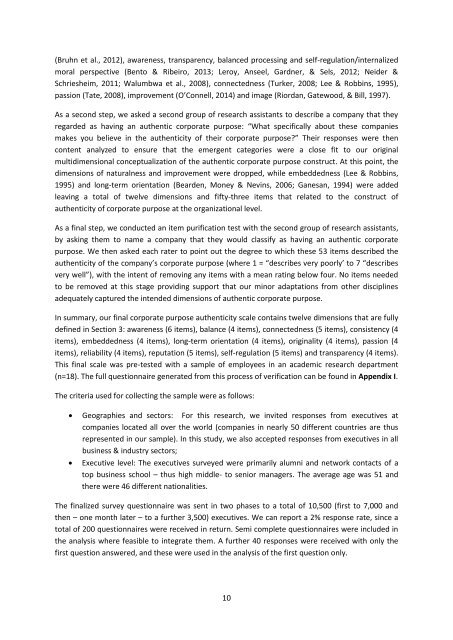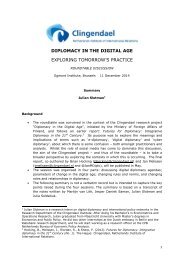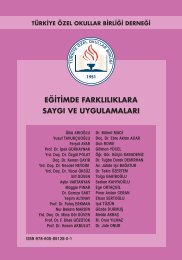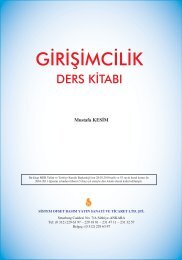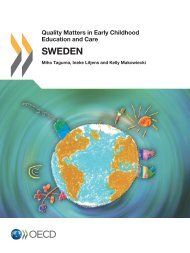BM_IMD_REPORT-How-Authentic-is-your-Corporate-Purpose
BM_IMD_REPORT-How-Authentic-is-your-Corporate-Purpose
BM_IMD_REPORT-How-Authentic-is-your-Corporate-Purpose
You also want an ePaper? Increase the reach of your titles
YUMPU automatically turns print PDFs into web optimized ePapers that Google loves.
(Bruhn et al., 2012), awareness, transparency, balanced processing and self-regulation/internalized<br />
moral perspective (Bento & Ribeiro, 2013; Leroy, Anseel, Gardner, & Sels, 2012; Neider &<br />
Schriesheim, 2011; Walumbwa et al., 2008), connectedness (Turker, 2008; Lee & Robbins, 1995),<br />
passion (Tate, 2008), improvement (O’Connell, 2014) and image (Riordan, Gatewood, & Bill, 1997).<br />
As a second step, we asked a second group of research ass<strong>is</strong>tants to describe a company that they<br />
regarded as having an authentic corporate purpose: “What specifically about these companies<br />
makes you believe in the authenticity of their corporate purpose?” Their responses were then<br />
content analyzed to ensure that the emergent categories were a close fit to our original<br />
multidimensional conceptualization of the authentic corporate purpose construct. At th<strong>is</strong> point, the<br />
dimensions of naturalness and improvement were dropped, while embeddedness (Lee & Robbins,<br />
1995) and long-term orientation (Bearden, Money & Nevins, 2006; Ganesan, 1994) were added<br />
leaving a total of twelve dimensions and fifty-three items that related to the construct of<br />
authenticity of corporate purpose at the organizational level.<br />
As a final step, we conducted an item purification test with the second group of research ass<strong>is</strong>tants,<br />
by asking them to name a company that they would classify as having an authentic corporate<br />
purpose. We then asked each rater to point out the degree to which these 53 items described the<br />
authenticity of the company’s corporate purpose (where 1 = “describes very poorly’ to 7 “describes<br />
very well”), with the intent of removing any items with a mean rating below four. No items needed<br />
to be removed at th<strong>is</strong> stage providing support that our minor adaptations from other d<strong>is</strong>ciplines<br />
adequately captured the intended dimensions of authentic corporate purpose.<br />
In summary, our final corporate purpose authenticity scale contains twelve dimensions that are fully<br />
defined in Section 3: awareness (6 items), balance (4 items), connectedness (5 items), cons<strong>is</strong>tency (4<br />
items), embeddedness (4 items), long-term orientation (4 items), originality (4 items), passion (4<br />
items), reliability (4 items), reputation (5 items), self-regulation (5 items) and transparency (4 items).<br />
Th<strong>is</strong> final scale was pre-tested with a sample of employees in an academic research department<br />
(n=18). The full questionnaire generated from th<strong>is</strong> process of verification can be found in Appendix I.<br />
The criteria used for collecting the sample were as follows:<br />
Geographies and sectors: For th<strong>is</strong> research, we invited responses from executives at<br />
companies located all over the world (companies in nearly 50 different countries are thus<br />
represented in our sample). In th<strong>is</strong> study, we also accepted responses from executives in all<br />
business & industry sectors;<br />
<br />
Executive level: The executives surveyed were primarily alumni and network contacts of a<br />
top business school – thus high middle- to senior managers. The average age was 51 and<br />
there were 46 different nationalities.<br />
The finalized survey questionnaire was sent in two phases to a total of 10,500 (first to 7,000 and<br />
then – one month later – to a further 3,500) executives. We can report a 2% response rate, since a<br />
total of 200 questionnaires were received in return. Semi complete questionnaires were included in<br />
the analys<strong>is</strong> where feasible to integrate them. A further 40 responses were received with only the<br />
first question answered, and these were used in the analys<strong>is</strong> of the first question only.<br />
10


